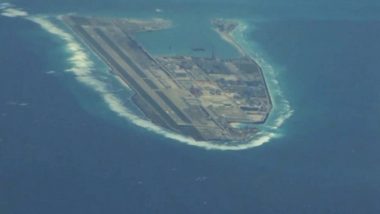Above the contested waters of the South China Sea, reporters from multiple news organisations were given a view by the U.S. Air Force of the extent of China’s construction of artificial islands in the Spratly Chain.
Aboard a U.S. Navy P-8A Poseidon reconnaissance plane, the reporters saw how islets that were just sand patches in the sea have been turned into heavily militarised zones with five-story buildings, large radar installations, power plants and runways sturdy enough to carry large military aircraft.
In the video recorded by these reporters, six separate warnings were given out by the Chinese military, telling the U.S. pilots they were inside Chinese territory and urging them to leave. "Leave immediately and keep out to avoid any misunderstanding," a voice said.
But the U.S. says it is carrying out these fly pasts to drive home a point to Beijing – that the South China Sea is international waters and it is the Chinese that are trespassing – as ruled by an international tribunal in July 2016.
Accordingly, every time the U.S. Navy’s Poseidon was warned away by the Chinese military, the pilots responded with: "I am a sovereign immune United States naval aircraft conducting lawful military activities beyond the national airspace of any coastal state," the response said.
"In exercising these rights guaranteed by international law, I am operating with due regard for the rights and duties of all states."
The CNN lists what the US Navy Aircraft picked up: China has built up fortifications on the Subi Reef, Fiery Cross Reef, Johnson Reef and Mischief Reef. On Subi Reef, the Poseidon's sensors picked up 86 vessels, including Chinese coast guard ships, moored in a giant lagoon, while on Fiery Cross Reef rows of hangers stood alongside a lengthy runway.
China's claim is based on a "nine-dash line" – a principal they say is derived from ancient times which saw rulers have dominion over these waters. Based on this, China’s claim extends more than one thousand kilometers from its southernmost province, taking in more or less the entirety of the South China Sea, through which the United Nations estimates one-third of global shipping passes.
Vietnam, the Philippines, Taiwan, Indonesia, Malaysia and Brunei all claim overlapping portions of the sea which spans 3.6 million square kilometers. The Philippines had received the ruling in its favour in 2016 which had rejected China’s claim to the South China Sea.
(The above story first appeared on LatestLY on Aug 11, 2018 05:25 AM IST. For more news and updates on politics, world, sports, entertainment and lifestyle, log on to our website latestly.com).













 Quickly
Quickly





















